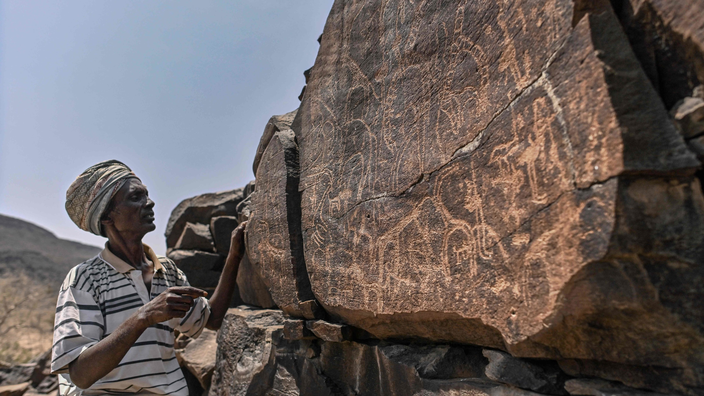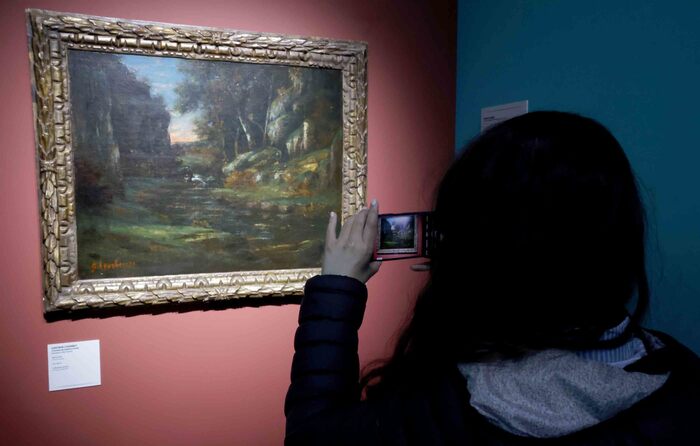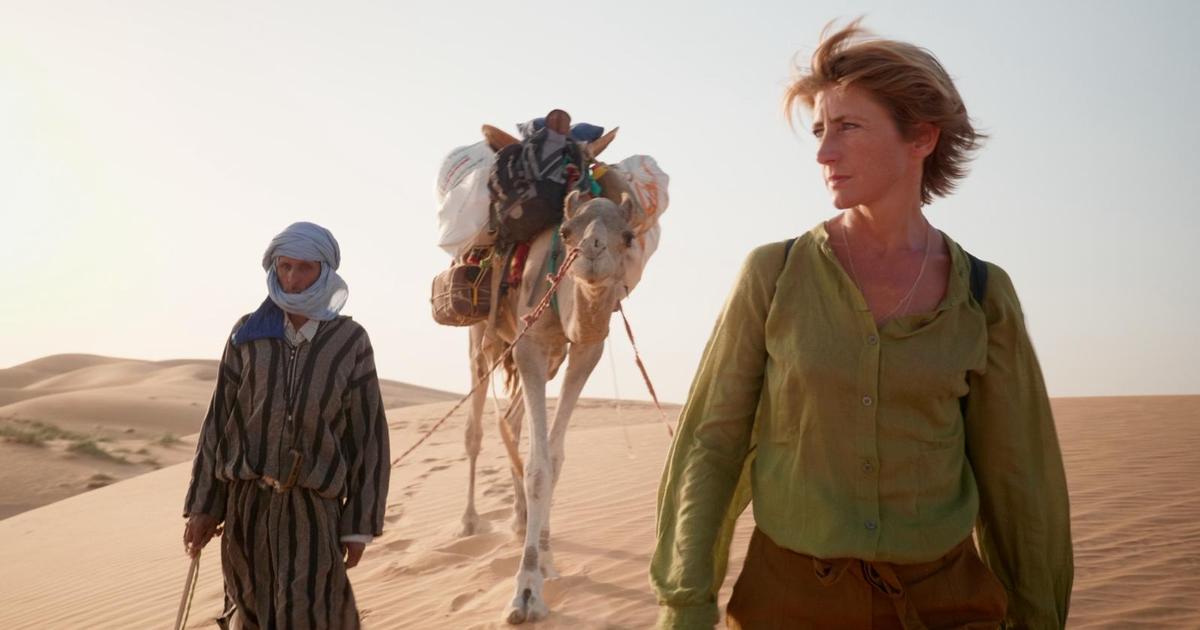At first glance, it is just yet another black hill, formed of blocks of basalt and struck down by the scorching sun.
Then emerge giraffes, ostriches, antelopes: an immense bestiary, carved in the rock up to 70 centuries ago.
Abourma, north of Djibouti, is one of the most important rock art sites in the Horn of Africa, a region with a rich archaeological heritage, known to be the cradle of humanity.
Read also: The great ambitions of Djibouti
For about 3 kilometers, some 900 panels follow one another, showing here tiny hunters facing a gigantic giraffe, there elegant ostriches, or, further on, a herd of cows. In flint, prehistoric men recounted their daily life, testifying to the arrival of cattle but also to a profound upheaval in the climate. These wild animals, typical of a wooded steppe, no longer exist in Djibouti, a desert country where water and greenery have been scarce for several thousand years.
“
Today, Abourma is a cemetery if we can say so, because we have more.
At the time they lived here, these kinds of animals.
At the time Djibouti, it was occupied by the forest
”, explains in French Omar Mohamed Kamil, a young tourist guide originating in this region.
"
We are a little removed from civilization, we are in prehistory, we live in prehistory,
" he adds, his throat dry by the midday heat.
Continuity, over several millennia
Six hours of drive from the capital, Djibouti city, then an hour of walk through the hills, it took five before a recent extension of the track, is necessary to reach the site. And yet, the latter would remain untraceable without the expert eye of Ibrahim Dabale Loubak, 50, who "
knows every stone, every corner
" of this rocky massif. The keeper of Abourma, also a dromedary breeder, was born here. His community, the Afar - a historically nomadic people who live in this remote region on the borders of Djibouti, Eritrea and Ethiopia, has always been aware of the engravings. “
Our grandfathers told our fathers and then our fathers told us
,” explains this man with a slim figure, wearing the traditional turban and foutah.
Read also: In Ethiopia, the rebels take control of Lalibela and its churches carved in the rock
The engravings, which date back to the Neolithic, depict hunting scenes and domesticated animals.
TONY KARUMBA / AFP
But Abourma was not visited for the first time by archaeologists until 2005. It was Dabale Loubak who guided the French researchers to the site, accompanied by a caravan of camels carrying food, beds, equipment. of work, and the essential generator. The archaeologist Benoit Poisblaud evokes with a voice still moved this “
extraordinary site
”, “
never seen in Djibouti or even in Ethiopia
”, which he studied as a post-doctorate at the age of 25 years. “
Abourma is a continuity, over several millennia, of passages, engravings, by people who are very different: hunters, pastors, pastors much later (...) Thousands and thousands of representations
», Adds the archaeologist.
The dating of the drawings, he points out, is
"between - 5000 and 0".
Tourism and protection
Africa has an immense archaeological heritage but many sites, especially rock art, have been little studied, if at all, notes Emmanuel Ndiema, head of the archeology department at the National Museums of Kenya.
"
I would say that only 10 to 20% of the sites have been documented
", specifies the expert, pointing out that sub-Saharan Africa attracts less researchers than other regions of the world, and that archaeological work is more expensive there, in due to lack of infrastructure.
“
Even today as I speak to you, we still receive information on (not studied) sites here, in Kenya, not even elsewhere!
The research deficit weighs on the development of this heritage, which could attract tourists and generate income for states and communities, experts say.
But, they say, greater visibility also poses a risk in terms of protecting this heritage.
In Abourma, where tourists are rare, no fence, barrier or ticket office block the entrance.
The security of the engravings?
Not a problem, according to Dabale Loubak.
“
No one can come here without my knowing it,
” said the afar guard.
The inhabitants of these silent valleys bring him, he says, the slightest noise.
Ibrahim Dabale, 50, knows the history of each of the rocks of the Tadjoura massif. TONY KARUMBA / AFP















